
 As many of you know, Patricia McKillip died recently. My little corner of the internet has been full of tributes to her, including a wonderful episode of The Coode Street Podcast featuring Ellen Kushner and E Lily Yu. This may be a surprise to younger readers as McKillip hasn’t been that active of late. As far as I’m aware, her last novel came out in 2016, though she may have produced short stories since then. Her first novel appeared in 1973, so she’s been around a long time.
As many of you know, Patricia McKillip died recently. My little corner of the internet has been full of tributes to her, including a wonderful episode of The Coode Street Podcast featuring Ellen Kushner and E Lily Yu. This may be a surprise to younger readers as McKillip hasn’t been that active of late. As far as I’m aware, her last novel came out in 2016, though she may have produced short stories since then. Her first novel appeared in 1973, so she’s been around a long time.
In terms of awards, McKillip’s career includes two World Fantasy wins, and a World Fantasy Lifetime Achievement Award. But she’s only been a Hugo finalist once, and a Nebula finalist twice. She has, however, won four Mythopoeic Awards, and has been a finalist another 11 times, which tells you a lot about the sort of fiction she wrote.
While McKillip largely eschewed series after her initial, and very successful, Riddle Master of Hed trilogy, her publishers made her works instantly recognizable because each one came with a magnificent Kinuko Craft cover. The book I’m reviewing here did not, perhaps because it was her last, and perhaps because it does not address the same fairy-tale themes as those Craft-covered books.
Kingfisher is Arthuriana. Indeed, it is the same piece of Arthuriana that Nicola Griffith mined for Spear, but it has a very different take on the legend of Percival. To start with, it is set in a modern society with cars and cell phones. While the actual location is not of this world, it seems to me very clearly based on the west coast of the USA. The small, seaside towns, with their seafood restaurants, specializing in crab dishes, remind me a lot of places like Fort Bragg. McKillip was born in Oregon, and lived there for much of her life.
Welcome, then, to the land of Wyvernhold, still ruled over by King Arden, though the 9th of that name. The world has moved on a lot since it was necessary for bold knights to hunt mythical creatures. While jousting and swordplay are still popular, these days knights prefer black leather to full plate, and they get around on motorbikes, unless they are very rich like Gareth May (Gawain) or Leith Duresse (Lancelot) and have a chauffeur-driven limousine.
In McKillip’s book, Perceval is not a young Welshman, he is a son of Lancelot. In fact Leith has two sons: Pierce and Val, but it is Pierce, the younger, who is our hero. I suspect that McKillip did this because she wanted to give Lancelot a shot at redemption, but I can’t ask her now and I doubt that she’d answer if I could.
More true to the tradition is that Pierce has grown up in obscurity, raised by his mother, the sorceress Heloise. She left court years ago, leaving Val in the care of Leith, because of Leith’s affair with Queen Genevra. But, as young proto-knights must, he chooses to leave her and seek his fortune, and his father, at court. And he does this just in time to partake in a great Quest for a mysterious object that might be a cup, a bowl, or a flowerpot. The knights can’t get much sense out of Sylvester Skelton, the king’s wizard.
That’s not Merlin, by the way. There’s a strange old man called Merle who lives in the seaside town of Chimera Bay, where the Kingfisher Inn is located. And when I say “strange”, I do mean that he has some very odd habits.
And then she saw her father, in the meadow under the soft touch of moonlight, changing into shape after shape in an intricate dance of power, or the constant folding and refolding of life in all its variations. Man became wolf became deer became hare became bear became cougar became porcupine became salmon leaping out of the water, became white heron became owl, soundless in the transfixed eye of the moon.
She, by the way, is Carrie, Merle’s daughter, who works as a cook at the Kingfisher. She has a key role in the plot.
Which brings us to cookery. Food is a major element of the story. Heloise has become a cook and runs a restaurant called Haricot in Desolation Point on far-north Cape Mistbegotten. Food is served at the Kingfisher Inn too. And then there is the mysterious Todd Stillwater, whose restaurant serves the most amazing concoctions that taste heavenly but always seen to leave diners more hungry than before.
There is much more in the book. Key to the story are the two great rivers, the Severen, and the Calluna, that intersect at Arden’s capital city of Severluna. They represent the sun god, Severen, and the moon goddess, Calluna. There is gender politics. There is some dispute as to which of these gods the thing that we must not call a Grail belongs to. And then there are the Knights of the Rising God, a group of knights who are exclusively devoted to Severen and are as thuggish and inconsiderate as any group of young, male religious fanatics.
This being a modern-day story, we have female knights, in particular Dame Scotia Malory, a descendant of the infamous writer who produced a, probably rather fanciful, biography of the original King Arden. If by now you have come to the conclusion that McKillip is just having fun writing Arthurian fanfic, you’d be dead right. But then all Arthuriana is fanfic of a sort.
There are echoes of The Tempest in the book too.
So there is love of the stories, there is gender politics, there is paganism, there is occasional comedy (often at the expense of Lancelot or Merlin), but above all there is enchantment.
Once our true realm ran from one horizon to the other, from day to night; you could move from one end to the other with a wish. A step. […] Now time gets in the way.
As our heroes will discover, there is such a thing as enchantment. You can be ensorcelled, and find that your mind is not your own. But sometimes there is worse. Sometimes you can be disenchanted.
To read a Patricia McKillip book is to be enchanted. Now that there will be no more, we are, in a way, disenchanted. Fortunately I have not read all of them. There is magic yet to come.
 Title:
Title: Kingfisher
By: Patricia McKillipPublisher: Ace
Purchase links:Amazon UKAmazon USSee
here for information about buying books though
Salon Futura


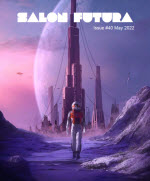 This is the May 2022 issue of Salon Futura. Here are the contents.
This is the May 2022 issue of Salon Futura. Here are the contents. Kingfisher
Kingfisher Aspects
Aspects Plutoshine
Plutoshine Dreams Bigger Than Heartbreak
Dreams Bigger Than Heartbreak Kundo Wakes Up
Kundo Wakes Up Åcon XI
Åcon XI Star Trek: Prodigy
Star Trek: Prodigy Picard – Season 2
Picard – Season 2 Editorial – May 2022
Editorial – May 2022 This issue’s cover is again from
This issue’s cover is again from 
 As many of you know, Patricia McKillip died recently. My little corner of the internet has been full of tributes to her, including a
As many of you know, Patricia McKillip died recently. My little corner of the internet has been full of tributes to her, including a 
 Most of you will, I suspect, know that this book is unfinished. What I hadn’t quite twigged before starting it, is that it is not just an unfinished novel, it is an unfinished fantasy series. No one knows how many books John M Ford had planned before his untimely death in 2006, but it was clearly more than one.
Most of you will, I suspect, know that this book is unfinished. What I hadn’t quite twigged before starting it, is that it is not just an unfinished novel, it is an unfinished fantasy series. No one knows how many books John M Ford had planned before his untimely death in 2006, but it was clearly more than one.
 Last month I featured a review of a debut novel from a woman writer fresh out of university that I found very impressive. Now I have another one, equally impressive, but very different.
Last month I featured a review of a debut novel from a woman writer fresh out of university that I found very impressive. Now I have another one, equally impressive, but very different.
 I don’t read a lot of YA, but I’d be happy to bet that Charlie Jane Anders’ Unstoppable series is not typical. It is not just about teenagers. It is about mostly queer teenagers.
I don’t read a lot of YA, but I’d be happy to bet that Charlie Jane Anders’ Unstoppable series is not typical. It is not just about teenagers. It is about mostly queer teenagers.
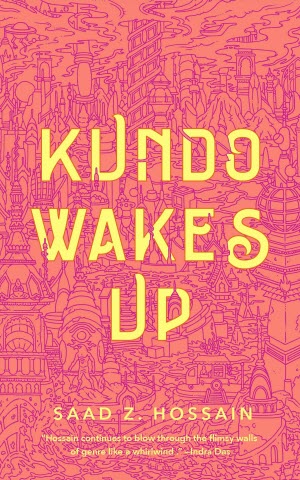 Kundo Wakes Up is the latest in a series of books, mostly novellas, by Saad Z Hossain, who is fast becoming one of my favourite writers. They are essentially cyberpunk, but set in a near future South Asia which manages to be a much better setting for such tales than Seattle. They also have djinn. Everything is better with djinn, it seems.
Kundo Wakes Up is the latest in a series of books, mostly novellas, by Saad Z Hossain, who is fast becoming one of my favourite writers. They are essentially cyberpunk, but set in a near future South Asia which manages to be a much better setting for such tales than Seattle. They also have djinn. Everything is better with djinn, it seems.
 It has been a long time. The last Åcon was in 2019. But finally Nordic fandom has been able to gather in Mariehamn once more, joined as usual by a few folks from further afield.
It has been a long time. The last Åcon was in 2019. But finally Nordic fandom has been able to gather in Mariehamn once more, joined as usual by a few folks from further afield. We don’t yet have Paramount + here in the UK, and anyway I’m ambivalent about paying for a streaming service just to watch Star Trek. I can’t think of anything else they offer that I’d want to watch. So I’d kind of resigned myself to not seeing Prodigy. But then I discovered that it is on Nickleodeon, and I have that channel as part of my Sky subscription, so I promptly binged the first season.
We don’t yet have Paramount + here in the UK, and anyway I’m ambivalent about paying for a streaming service just to watch Star Trek. I can’t think of anything else they offer that I’d want to watch. So I’d kind of resigned myself to not seeing Prodigy. But then I discovered that it is on Nickleodeon, and I have that channel as part of my Sky subscription, so I promptly binged the first season. Jean Luc Picard has many, many loyal fans, and Paramount seems determined to milk them for all they are worth. This means re-visiting themes from the original Next Generation series. In the first season of Picard, that meant Data and related artificial beings. In this one it means mainly the Borg, whom we are supposed to have got rid of, and Q, whom sadly we haven’t.
Jean Luc Picard has many, many loyal fans, and Paramount seems determined to milk them for all they are worth. This means re-visiting themes from the original Next Generation series. In the first season of Picard, that meant Data and related artificial beings. In this one it means mainly the Borg, whom we are supposed to have got rid of, and Q, whom sadly we haven’t.
 This is the April 2022 issue of Salon Futura. Here are the contents.
This is the April 2022 issue of Salon Futura. Here are the contents. A Psalm for the Wild-Built
A Psalm for the Wild-Built Bluebird
Bluebird StarHenge
StarHenge Midnight Doorways
Midnight Doorways The White Room
The White Room Rosebud
Rosebud Eastercon 2022
Eastercon 2022 Spiderman – No Way Home
Spiderman – No Way Home Story Matrices
Story Matrices Star Trek: Discovery – Season 4
Star Trek: Discovery – Season 4 This issue’s cover uses a piece of art that Liam Sharp has been using to promote his StarHenge comic. It shows a Mor-Dreadnaught of The Cast, who are the villains of the story. I cheekily asked Liam if he’d mind me using it, and he said yes. Huge thanks are appropriate. An undulterated version of the art is available below.
This issue’s cover uses a piece of art that Liam Sharp has been using to promote his StarHenge comic. It shows a Mor-Dreadnaught of The Cast, who are the villains of the story. I cheekily asked Liam if he’d mind me using it, and he said yes. Huge thanks are appropriate. An undulterated version of the art is available below.
 It is Hugo reading time, and that means catching up with Becky Chambers. It is easy to see why she is so popular. Her prose is effortlessly readable and deeply caring. But this can mask the amount of thought that she puts into her work.
It is Hugo reading time, and that means catching up with Becky Chambers. It is easy to see why she is so popular. Her prose is effortlessly readable and deeply caring. But this can mask the amount of thought that she puts into her work.
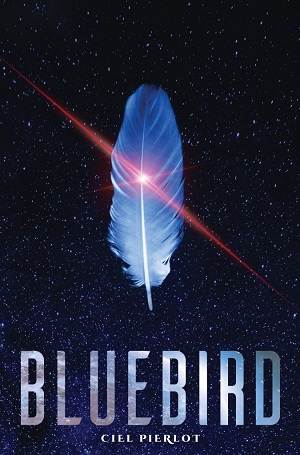 Did someone say, “lesbian space pirate”? I’m in.
Did someone say, “lesbian space pirate”? I’m in.
 Sometimes in this business you meet someone and can see immediately that they have huge amounts of talent and are going to do very well for themselves. In my case one such person was Liam Sharp. I could see that he had a fine career as an artist in front of him, and I was right. He’s currently having a bumper year. He’s had a hugely successful Kickstarter campaign for an art book, and now he is starting that holy grail of all comics people, a creator-owned title.
Sometimes in this business you meet someone and can see immediately that they have huge amounts of talent and are going to do very well for themselves. In my case one such person was Liam Sharp. I could see that he had a fine career as an artist in front of him, and I was right. He’s currently having a bumper year. He’s had a hugely successful Kickstarter campaign for an art book, and now he is starting that holy grail of all comics people, a creator-owned title. While the level of diversity in mainstream publishing has improved quite a bit of late, it is still hard for writers of colour who do not live in the Anglosphere to get their work considered. Often what they have to do is publish locally and hope that their book gets some attention, and is then picked up by a bigger publisher. Examples of this are Samit Basu’s Chosen Spirits, which will be re-published as The City Inside by Tot.com in June, and Lavanya Lakshminarayan’s Analog/Virtual, which will be republished as The Ten Percent Thief by Solaris next year. I am hoping that something similar will happen with Usman T Malik’s Midnight Doorways.
While the level of diversity in mainstream publishing has improved quite a bit of late, it is still hard for writers of colour who do not live in the Anglosphere to get their work considered. Often what they have to do is publish locally and hope that their book gets some attention, and is then picked up by a bigger publisher. Examples of this are Samit Basu’s Chosen Spirits, which will be re-published as The City Inside by Tot.com in June, and Lavanya Lakshminarayan’s Analog/Virtual, which will be republished as The Ten Percent Thief by Solaris next year. I am hoping that something similar will happen with Usman T Malik’s Midnight Doorways.
 If you want to know the things we see
If you want to know the things we see
 This is another book that I can’t give a proper review of, because I did a brief bit of consultancy work on it. My name is right there in the acknowledgements. But I did love the book when I first read it, and consequently want to tell you about it.
This is another book that I can’t give a proper review of, because I did a brief bit of consultancy work on it. My name is right there in the acknowledgements. But I did love the book when I first read it, and consequently want to tell you about it.
 As experiments go, this was one part encouraging and one part rather scary. Let’s start with the good stuff.
As experiments go, this was one part encouraging and one part rather scary. Let’s start with the good stuff. Well that wasn’t as bad as I expected. I’d been all primed to absolutely hate this movie. Into the SpiderVerse is by far my favourite Spiderman movie, and I had heard that No Way Home steals much of the plot of that. To a certain extent it does, and of course it does it badly because all of the spiderpeople it brings in from across the multiverse are Peter Parker, which is very boring in comparison. However, there’s a reason why the new film is the way it is.
Well that wasn’t as bad as I expected. I’d been all primed to absolutely hate this movie. Into the SpiderVerse is by far my favourite Spiderman movie, and I had heard that No Way Home steals much of the plot of that. To a certain extent it does, and of course it does it badly because all of the spiderpeople it brings in from across the multiverse are Peter Parker, which is very boring in comparison. However, there’s a reason why the new film is the way it is.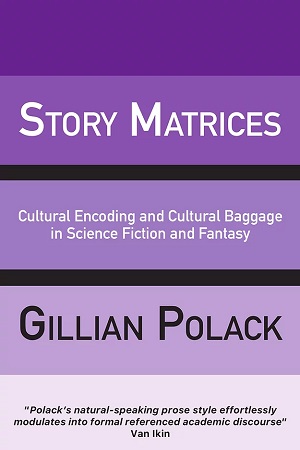 The full title of this book is Story Matrices: Cultural Encoding and Cultural Baggage in Science Fiction and Fantasy, because it is an academic work and therefore must have a colon somewhere. However, don’t let that put you off, because Gillian Polack tries hard to make her work accessible, and the book is published by Luna Press so it does not cost three years’ wages to buy.
The full title of this book is Story Matrices: Cultural Encoding and Cultural Baggage in Science Fiction and Fantasy, because it is an academic work and therefore must have a colon somewhere. However, don’t let that put you off, because Gillian Polack tries hard to make her work accessible, and the book is published by Luna Press so it does not cost three years’ wages to buy.
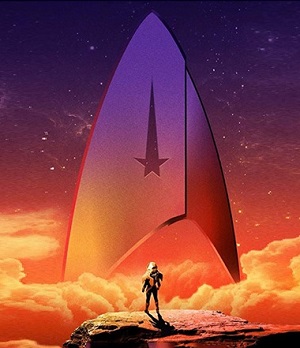 Season 4 of Star Trek: Discovery had a difficult time in the UK. First it was announced as streaming on Netflix. Then it was pulled the day before the first episode was due to drop. We were told we’d have to wait months for it to be available on Paramount +. There was a huge outcry, and mysteriously the series appeared on a live streaming TV platform called Pluto which I’d never heard of before.
Season 4 of Star Trek: Discovery had a difficult time in the UK. First it was announced as streaming on Netflix. Then it was pulled the day before the first episode was due to drop. We were told we’d have to wait months for it to be available on Paramount +. There was a huge outcry, and mysteriously the series appeared on a live streaming TV platform called Pluto which I’d never heard of before.
 This is the March 2022 issue of Salon Futura. Here are the contents.
This is the March 2022 issue of Salon Futura. Here are the contents. Age of Ash
Age of Ash Dune
Dune These Lifeless Things
These Lifeless Things Dear Letter Writers…
Dear Letter Writers… Bones and Stars
Bones and Stars The Cuckoo Cage
The Cuckoo Cage Alia Terra
Alia Terra Lower Decks – Season 2
Lower Decks – Season 2 Prime Deceptions
Prime Deceptions This issue’s cover is based on Ben Baldwin’s art for the new Chaz Brenchey novel, The Devil in the Dust. This is the first part of the re-issue of the legendary Outremer series. Links to pre-orders are available
This issue’s cover is based on Ben Baldwin’s art for the new Chaz Brenchey novel, The Devil in the Dust. This is the first part of the re-issue of the legendary Outremer series. Links to pre-orders are available 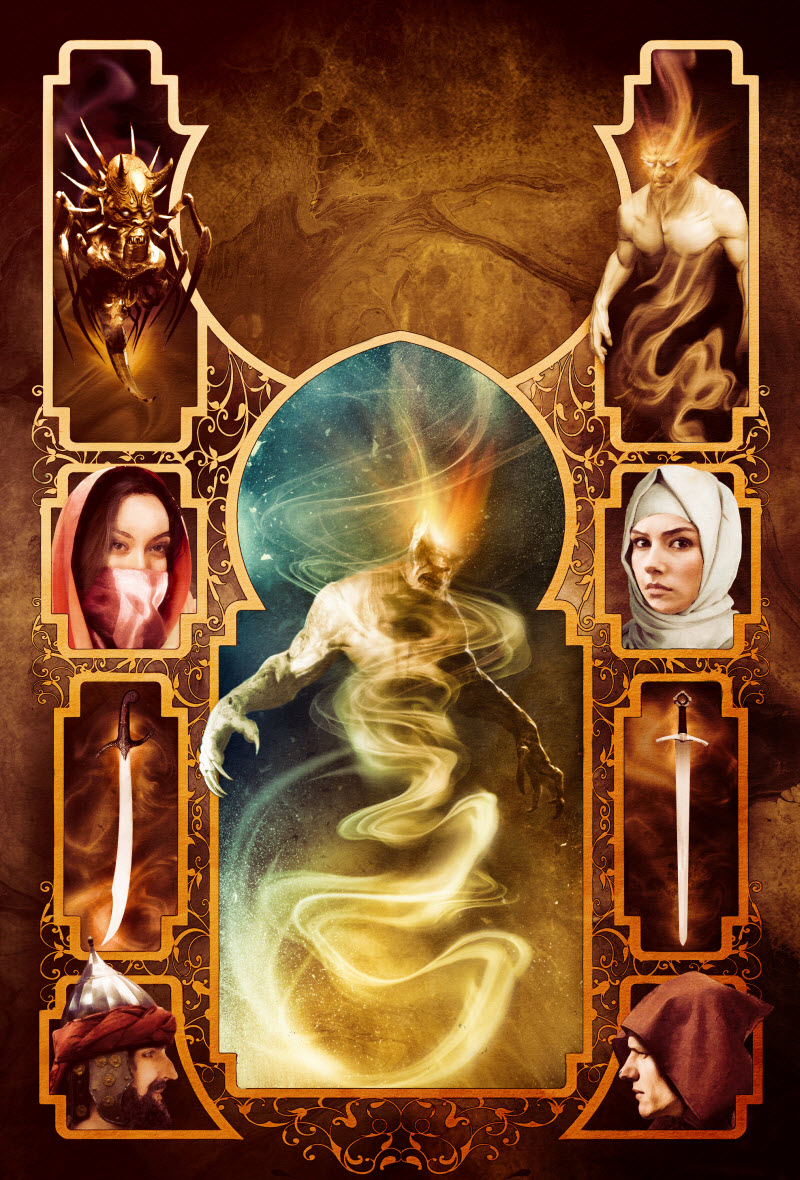
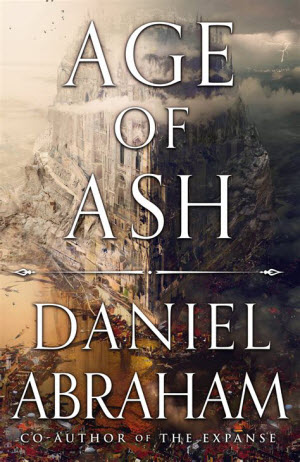 If you were to ask people who their favourite writer of epic fantasy was, the chances are that they would not mention Daniel Abraham. If people know his name at all they probably do so because he is one half of the writing team known as James S A Corey, and therefore is part-responsible for The Expanse, which is a very fine piece of science fiction. However, he is also responsible for The Long Price Quartet, which I fangirled over shamelessly back in Emerald City days, and which I still believe is one of the finest epic fantasies ever produced. I managed to space on the Dagger and Coin series because I was not in a good place for reading long books when it came out, but Abraham is now back with the Kithamar Trilogy, starting with Age of Ash.
If you were to ask people who their favourite writer of epic fantasy was, the chances are that they would not mention Daniel Abraham. If people know his name at all they probably do so because he is one half of the writing team known as James S A Corey, and therefore is part-responsible for The Expanse, which is a very fine piece of science fiction. However, he is also responsible for The Long Price Quartet, which I fangirled over shamelessly back in Emerald City days, and which I still believe is one of the finest epic fantasies ever produced. I managed to space on the Dagger and Coin series because I was not in a good place for reading long books when it came out, but Abraham is now back with the Kithamar Trilogy, starting with Age of Ash.
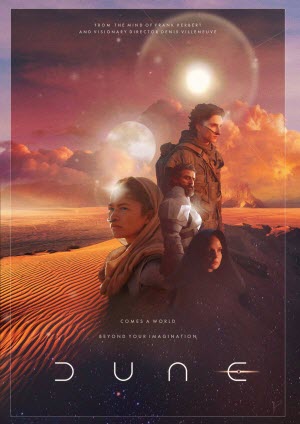 Now that was a movie. I do wish that I had been able to see it on a big screen as it deserves. Maybe someone (hello Glasgow Worldcon) will consider screening both parts back-to-back. Assuming Part Two lives up to the promise of Part One, of course.
Now that was a movie. I do wish that I had been able to see it on a big screen as it deserves. Maybe someone (hello Glasgow Worldcon) will consider screening both parts back-to-back. Assuming Part Two lives up to the promise of Part One, of course.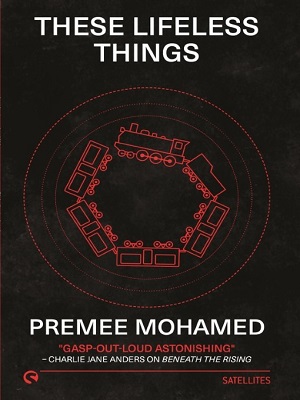 I owe this one to the good folks at the Hugo Book Club. They were recommending novellas that people might nominate. This one sounded interesting, and it was.
I owe this one to the good folks at the Hugo Book Club. They were recommending novellas that people might nominate. This one sounded interesting, and it was.
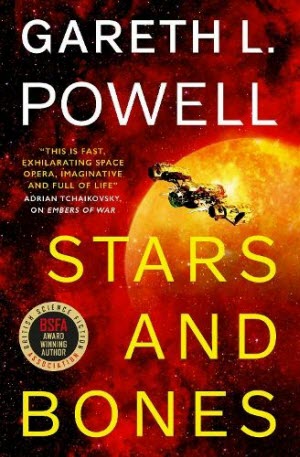 A new Gareth Powell novel is always a matter of interest in these here parts. Stars and Bones reads like a stand-alone, so it may be a good point for those of you who haven’t tried Gareth’s work before to dip in and find out what he’s about.
A new Gareth Powell novel is always a matter of interest in these here parts. Stars and Bones reads like a stand-alone, so it may be a good point for those of you who haven’t tried Gareth’s work before to dip in and find out what he’s about.
 Those of you with a fondness for interesting short fiction will doubtless already know of Comma Press. They have published two collections by M John Harrison. They have also done three anthologies of translated SF, one by Palestinian authors, one by Iraqis, and one by Kurds. I think the way they first came to my attention was with a book called When It Changed. Edited by Geoff Ryman, this pulled together a number of top-class science fiction writers paired with bleeding edge scientists. The idea was for the scientists to provide ideas for the writers to explore.
Those of you with a fondness for interesting short fiction will doubtless already know of Comma Press. They have published two collections by M John Harrison. They have also done three anthologies of translated SF, one by Palestinian authors, one by Iraqis, and one by Kurds. I think the way they first came to my attention was with a book called When It Changed. Edited by Geoff Ryman, this pulled together a number of top-class science fiction writers paired with bleeding edge scientists. The idea was for the scientists to provide ideas for the writers to explore.
 This is a book that I did a small sensitivity reading job on, so I can’t do much in the way of a review, but I want to mention the book because what Atthis Arts are doing with it is very interesting.
This is a book that I did a small sensitivity reading job on, so I can’t do much in the way of a review, but I want to mention the book because what Atthis Arts are doing with it is very interesting.
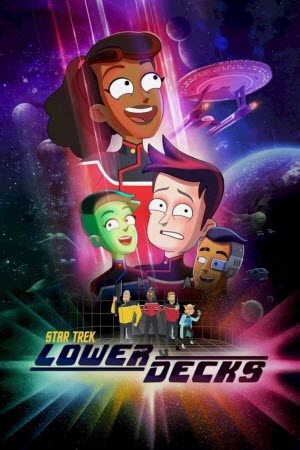 There is a lot of Star Trek on TV right now, and Lower Decks continues to be among the best of it.
There is a lot of Star Trek on TV right now, and Lower Decks continues to be among the best of it.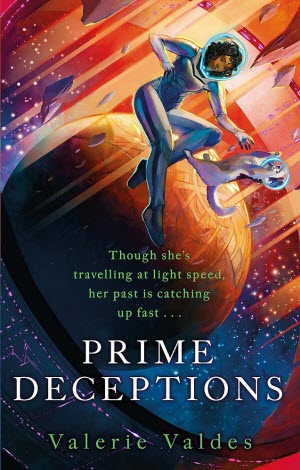 This is the second volume in Valerie Valdes’s series about Captain Eva Innocente and her crew of semi-illegal misfits. Much of it is very much the same fare as book 1. Indeed, the main plot is remarkably similar, only it is another one of the crew’s siblings that needs rescuing. How things work around that is rather different.
This is the second volume in Valerie Valdes’s series about Captain Eva Innocente and her crew of semi-illegal misfits. Much of it is very much the same fare as book 1. Indeed, the main plot is remarkably similar, only it is another one of the crew’s siblings that needs rescuing. How things work around that is rather different.

 Season 2 of The Witcher was much more of a conventional story arc. Personally I didn’t have any difficulty with the multiple timelines of season 1, but then again I have read an awful lot of speculative fiction. It was disorienting in Iain Banks’ Use of Weapons, now it is just normal.
Season 2 of The Witcher was much more of a conventional story arc. Personally I didn’t have any difficulty with the multiple timelines of season 1, but then again I have read an awful lot of speculative fiction. It was disorienting in Iain Banks’ Use of Weapons, now it is just normal.
 This is the January 2022 issue of Salon Futura. Here are the contents.
This is the January 2022 issue of Salon Futura. Here are the contents. She Who Became the Sun
She Who Became the Sun Cyber Mage
Cyber Mage The Faerie Queene
The Faerie Queene Elder Race
Elder Race Servant Mage
Servant Mage Eternals
Eternals The Witcher – Season 1
The Witcher – Season 1